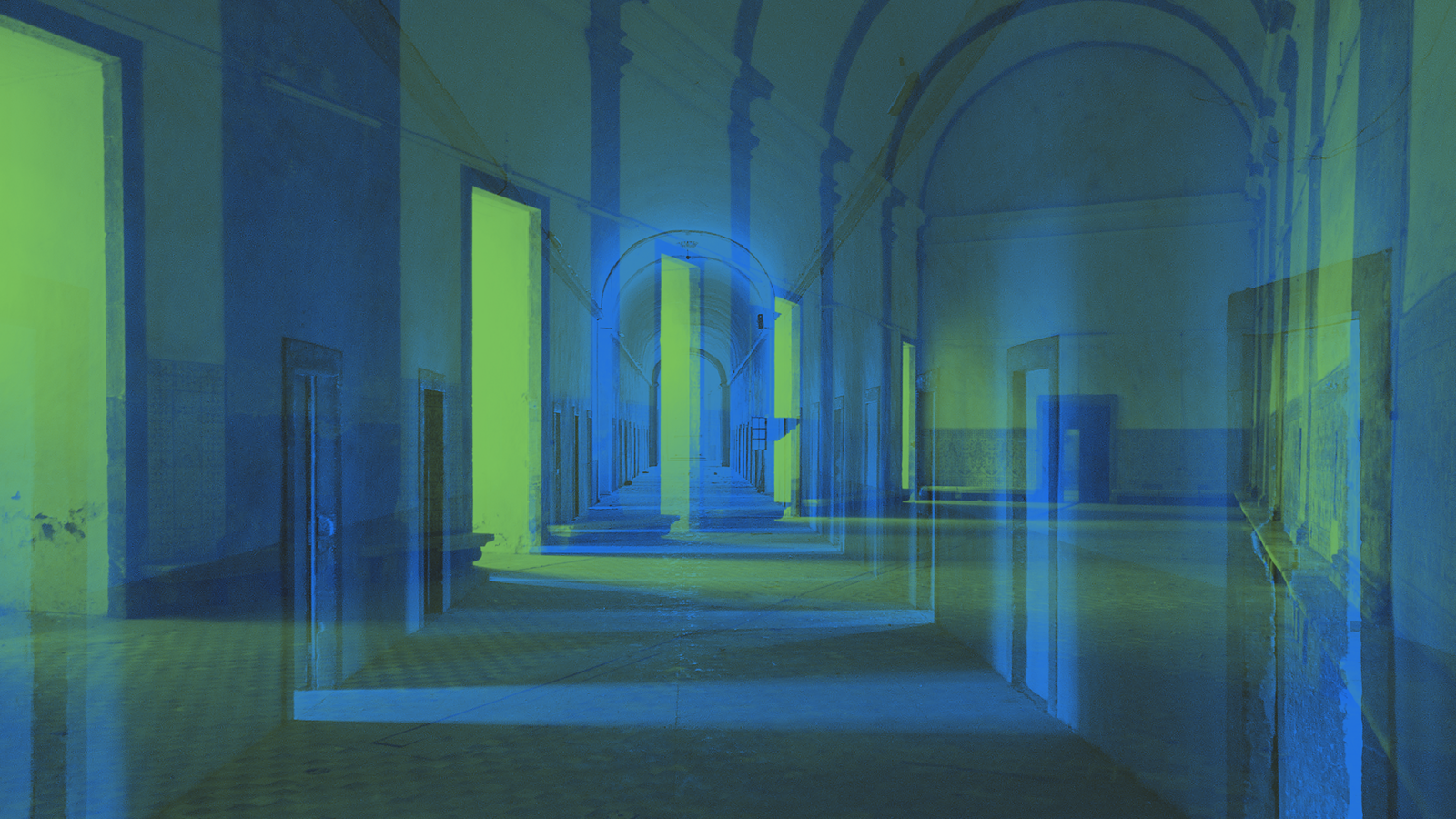April 6–June 30, 2024
Instagram / Facebook / #anozerobienalcoimbra / #ofantasmadaliberdade / #thephantomofliberty
Curators: Ángel Calvo Ulloa and Marta Mestre
The fifth edition of Anozero – Bienal de Coimbra opens on April 6, 2024, with eight venues in Coimbra occupied by 40 artists who responded to the call from curators Ángel Calvo Ulloa and Marta Mestre.
An experimental and research project lasting close to two years laid the foundations for this edition, entitled The Phantom of Liberty. According to the curators, “The 5th edition of this biennial explores the idea of liberty and the strategies of contemporary art to challenge, displace, and inhabit it. The title has an ambiguous and open meaning. If, on the one hand, it suggests the idea that liberty is a phantom, an inescapable and spectral presence, on the other hand, it also points to an incomplete process, a disbelief in a once certain truth, more of a promise than something real.”
The invited artists have either produced commissioned works for the Bienal, in conjunction with local cultural associations, or have been invited to participate with existing works and projects. The works in the exhibition express a critical space for historical and actual events, which activates “surrealist” strategies, such as delirium, enigma, paranoia, juxtaposition, heteroclite, and poetry, to avoid simplistic apprehensions. The title of the Bienal is inspired by the 1974 film by Spanish director Luis Buñuel.
Occupying several venues in the city, from Coimbra-Alta and the University—an area listed as a UNESCO World Heritage site—to the outstanding Monastery of Santa Clara-a-Nova, on the other side of the river, Anozero rethinks the urban and suggests other routes. The Biennial is produced by CAPC, Círculo de Artes Plásticas de Coimbra, an institution of active artistic dissemination since 1958.
Anozero – Bienal de Coimbra has become one of the most important contemporary art biennials in the Iberian Peninsula, held in a UNESCO World Heritage site, and offering an ambitious programme is planned with exhibitions, artistic and urban interventions, shows, events and workshops.
On April 6, the opening day features performances and music by Yinka Es Graves, Scúru Fitchádu and DJ Diaki.
Artists
Adam Pendleton, Adriano Correia de Oliveira + Rosalía de Castro, Aline Motta + Ricardo Aleixo, Andrea Büttner, Bárbara Fonte, Berio Molina, Carla Filipe, Castiel Vitorino Brasileiro, Cildo Meireles, Clara Menéres, Daniel Barroca, Davi Pontes e Wallace Ferreira, Diego Bianchi, Filipe Feijão, Ilídio Candja Candja, Jeremy Deller, João Marçal, Luís Cília, Maria Velho da Costa, Mauro Cerqueira, NEG (Nova Escultura Galega), Patricia Gómez e María Jesús González, Paula Siebra, Paulo Nazareth, Pedro G. Romero, Priscila Fernandes, Regina Silveira, Robert Filliou, Rosemarie Trockel, Sandra Poulson, Susanne S. D. Themlitz, Teresa Lanceta, Túlia Saldanha, Yinka Esi Graves, Yonamine.
Venues
Jardim Botânico da Universidade de Coimbra, CAPC Círculo Sereia, CAPC Sede, Estação Ferroviária Coimbra B, Colégio das Artes, Mosteiro de Santa Clara-a-Nova, Pátio das Escolas, Sala da Cidade
In May, the The Phantom of Liberty biennial will launch a catalogue documenting all the artistic projects, accompanied by texts by theoreticians and artists such as Raquel Lima, Gabriel Tupinambá, Pedro G Romero, Jo Labanyi, Marta Lança, Daniel Barroca, Paula Ferreira and Jorge Cabrera, as well as the curators, Ángel Calvo Ulloa and Marta Mestre.
The visual identity of the biennial The Phantom of Liberty is coordinated by the Macedo Cannatà design studio.
Processos programme
Curated by Carlos Quintáns Eiras and assistant curator Zaida García Requejo, the architecture programme entitled “Processos” takes place concurrently. According to Carlos Quintáns: “Due to its complexity, the Monastery of Santa Clara is a metaphor for the world that forces us to reflect, to think about its history, conservation, materiality and memory.”
The programme will have two exhibitions, on April 6 and May 11. The first will feature several architectural projects developed in similar contexts by a group of architects who have consciously worked in these areas. In addition to the exhibition, the participants will also work on the Monastery and its surroundings with the architects’ own tools, on the themes of occupation, appropriation, relationship, other uses, consolidation, non-action, emptying, minimal construction, continued use and analysis. Secondly, their care interventions will be shown, reconnecting the city’s landmarks with the Monastery and its fence.
For press queries, please contact
National: Diana Santos, Anozero’24
International: Shauna Serra and Amanda Kelly, Pickles PR














